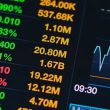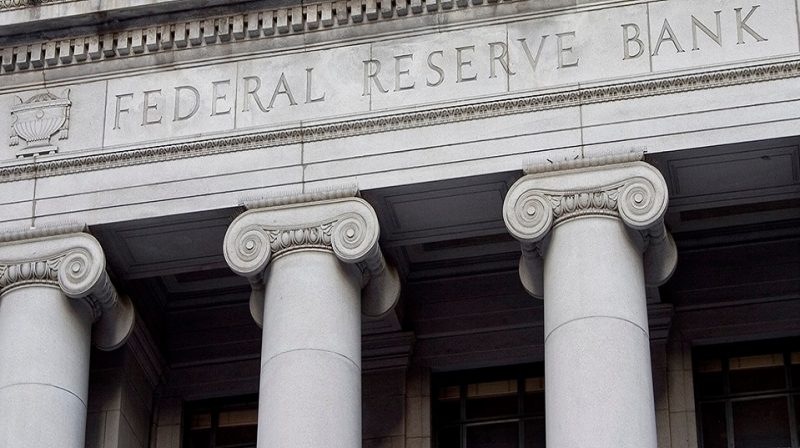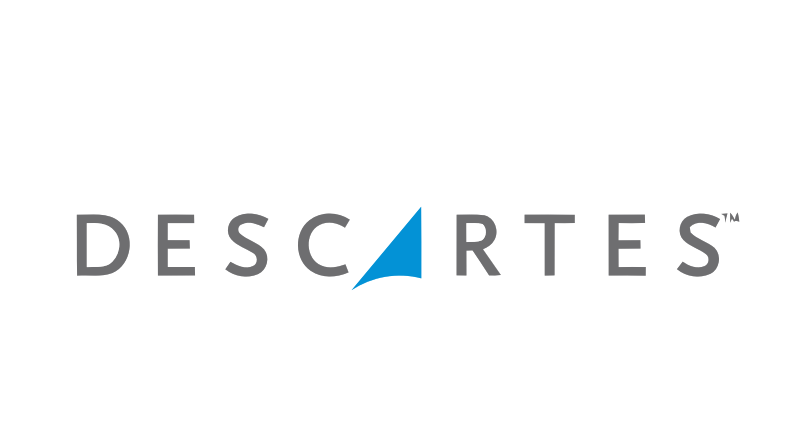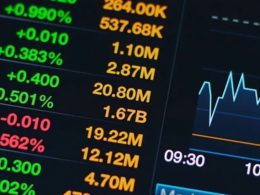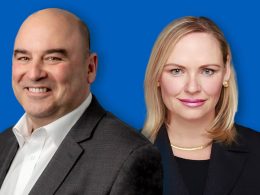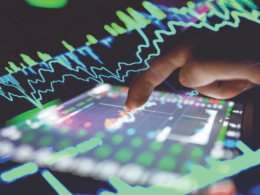by Hubert Marleau, Market Economist, Palos Management
This week’s narrative was the disappointment over big tech’s outlook, especially that of Amazon. Lingering concerns over China’s clampdown on their internet and technology sectors also weighed. Yet the S&P 500 was down this week by a mere 17 points or 0.4 % and closed at 4395. It should have risen, because equity funds took in more than $23 billion in new money, of which
$1.2 billion flowed into U.S. tech funds. Companies reported meaningful earnings beats and upbeat outlooks. Moreover, the market liked the bipartisan breakthrough for an infrastructure bill, the irrefragable return to a more conventional monetary policy, and indications that the economy should soon get back to normal. On the other hand, there are several cross-currents below the surface as we are about to enter a historically more volatile period.
History shows that the laggard returns of the Aug-Oct period usually offer opportunities to buy dips cheaply. Investors should note that a roaring productivity scenario is more likely than runaway inflation. Additionally, the probability for a continuous expansion is higher than a sudden recession, low interest should persist, and a more muted monetary response than in the past cycles can be expected.
Accordingly, I’m overweight equities because the average stock isn’t expensive in terms of earnings yield and there is a very good chance that their P/E multiples are not returning to their long-term arithmetic mean. Why? The Big Five (FB, AAPL, AMZN, GOOGL, MSFT) have a market value of $9.0 trillion, accounting for 25% of the aggregate value of the S&P 500 in Q2 with combined revenues of $332bn representing roughly 6.6% of the U.S. N-GDP, and after-tax earnings of $75bn producing about 15% of all the profits generated by the economy. They are the ones pulling the aggregate P/E multiple up to lofty level.
It is impossible for anyone to have any insight on what will be the impact of the Delta variant on the economy. Whether it will weigh on the return of workers to the labour market and/or continue to disrupt the supply chain, is a guesstimate. The pandemic has distorted many historical economic patterns, upon which GDP forecasting models are based. Given that business activity has not returned to a business-as-usual mode, predictions about what could be next should start with what we know.
On Thursday morning, the BEA revealed that the U.S. economy expanded at the annual rate of 6.5% in Q2/2021, missing expectations by 2.0 % as businesses ran down inventories and bought
abroad what they could not find at home. Nonetheless, vaccinations, government aid, monetary stimulus and big tech lifted the U.S. economy out of its pandemic-induced hole. The economy managed to regain output lost during the pandemic, but was still $500 billion or 2.5% short of where forecasters thought it would be before Covid-19 hit. With a bit of luck, it is very possible that the output gap will narrow considerably over the next two quarters. Spending on services is reviving, employment is rising, businesses are restocking and retailers are reducing dependence on foreign goods. Additionally, there is plenty of pent-up demand stemming from $750 billion of extra personal savings, and productivity gains are most impressive, rising at an annual rate of 4.0% in the last six months and accounting for 60% of the increase in real economic activity. This phenomenal increase in efficiency appears to be robust.
Business spending on productivity-enhancing equipment and software is equally robust. It’s up 26% from a year ago, representing 66% of total business investments. It was 65% in Q1/2021, 64% in Q4/2020, 63% in Q3/2020 and 61% in Q2/2020. Historically, this type of expenditure accounts for about 50% of total business investments. In other words, there should be enough residual power in the economy to catch up. The bottom line is that the economy has reached peak growth, and could slow down to an annualised rate around 5.0% in the second half of 2021 then return to the pre-pandemic annual trend rate of 2.0% in 2022. However, the Atlanta Fed’s initial GDPNow model estimate for real growth (saar) in Q3 of 2021 is 6.1%. In fact, the quality and strength of future growth will likely be superior, making the mid-cycle phase solid and sustainable. The U.S. M2 monetary turnover of money stabilized in Q2 and productivity gains are promising. Covid-19 has brought years’ worth of digital transformation in a few months. Microsoft CEO Satya Nadella said: “5% of the world GDP is tech spend, it’s projected to double in a few years. I think that doubling will happen at a more accelerated pace...What’s going to happen is every business, whether you’re a retailer or a manufacturer, in the service sector, public sector or private sector, digital adaptation is the way you're going to be resilient as well as transform the core business process.” The role of technology has made it easier for social distancing to deal with the coronavirus—it has permitted the economy to run fast without stop signs. People have been able to metaverse by being able to work, shop, learn, be entertained and stay in touch from home. This online shift will recede as the economy reopens but it will prove to be sticky and embossed as a quantum leap in productivity.
On Friday morning, the BEA published its “Personal Income and Outlays” for June 2021. There are two big takeaways. First, personal consumption was robust, increasing $155 billion month-to-month--$29 billion for goods and $126 billion for services. Credit and debit card spending haven’t shown a downturn yet, but may come sooner than previously expected. The personal saving rate was 9.4%--that is only 1.1 percentage point from what was considered normal pre-pandemic. In this regard, a lot of the pent-up demand has been used up—about $550bn. The amount of extra savings is now only around $200 billion. Given that path, the economy will closely follow that of disposable income, as it normally does. One could assume with some assurance that we are heading towards a 5.0 % in N-GDP in 2022. Second, it appears that the inflationary pressure cooker is starting to come off the boil. Notably, both the headline and core PCE prices have come in cooler than expected, and their month-over-month rates of increase have respectively decelerated for three and two consecutive months. The pace is rolling and productivity is keeping input costs low. The employment cost index is only 2.0% higher than last year.
Fed Up Waiting for a Monetary Policy Change? Don’t Be. It’s Happening
On Wednesday afternoon, the Fed decided to change nothing but said: “it shouldn't take that long in macroeconomic time to get maximum employment.” It is widely known that the Fed’s mandates are price stability and full employment. What is often forgotten is the third part, which has to do with instructions on how the Fed should reach those goals--“the bank shall maintain long run growth of the monetary and credit aggregates commensurate with the economy’s long run potential to increase production.”
The Fed views the juxtaposition between labour market slack and high inflation as temporary, and that of money supply growth and economic expansion as untenable. The monetary authorities think that job openings are high enough to assure an expansion, that the inflation overshoot is tied to a handful of categories and that the monetary aggregates are excessive but controllable. It suggests that the implicit desire to close the output gap without creating unwanted inflation would be achievable if monetary policy was separated into three phases: sterilization, tapering and liftoff. I’m not able to provide specific numbers on what counts as substantial progress for the Fed when it comes to the threshold for sterilization, tapering or lift-off. Yet, I have ideas in mind which may add colour.
On Sterilization: Preparing the Terrain
Currently, the monetary authorities are in the sterilization phase, preparing the terrain for an eventual tapering and lift-off. Overnight reverse repos are just shy of $1.0 trillion. They have been accumulating now for several months, effectively sterilising a big part of the money supply. When adjusted for this, the money supply is only up 3.9% from a year ago--according to Macro Strategy Partnership. Moreover, the Federal Reserve has launched new facilities designed to provide liquidity to big Wall Street banks (primary dealers) and foreign institutions (central banks) to ensure market stability at times of stress. History teaches that the unexpected happens. Should tapering and liftoff bring unanticipated disruptions to the short-term funding markets, the system would be ready to deal immediately with any unwelcome exchange and interest rate shocks. Moreover, an international standing repo facility would reassure the markets that central banks will be able to address pressures in the monetary markets that could impede the effective implementation of monetary policy.
On Tapering: Teeing Up for a Withdrawal
Whilst the Fed has taken a few small steps,it has deliberately been pedestrian in announcing a forward plan into a multi-month process. Yet Powell inferred that taper is coming. He noted that the FOMC did a “deep dive into the timing, pace and composition of taper” and that the economy has made “substantial progress”. When one understands the difficulty of balancing the hawks and the doves on the committee, it becomes clear that the read-through of the Fed's official statement is basically hawkish. It upgraded the economic assessment, showed little concern over the Delta variant, and nodded to progress. The stone has been cast and a taper declaration can be expected for September, with details at the Jackson Hole Symposium in October. St.Louis Fed Président James Bullard said markets are “very well prepared” for the central bank to start paring back asset purchases in the fall, and added that he’d like to see the program end by “the first quarter of next year.” It’s a faster timetable than suggested by his confreres—nonetheless investors should anticipate an actual taper in early 2022.
On Liftoff: A Long Wait
Regarding hiking the Federal funds rate, Powell said: “we’re clearly a ways away from raising interest rates. It’s not something that’s on our radar screen. We’re not at all near that point or anywhere near that point now.” The timing of the lift-off is almost entirely employment data dependent. The official unemployment numbers are 9.5 million in June 2021 as against 5.7 million in February 2020. The number of persons not in the labour force who currently want a job was 6.4 million, compared to 5.0 million for the comparative period. If the Fed wants to narrow the output gap to zero, the economy would have to create 5.2 million jobs. How long will that take? It would take 18 months at 288,000 new jobs a month to get there. That may be as good as it will get on the labour front. Deep problems are besetting the labour market like an aging workforce, skill mismatch, entitlement, and new avenues.
Copyright © Palos Management

